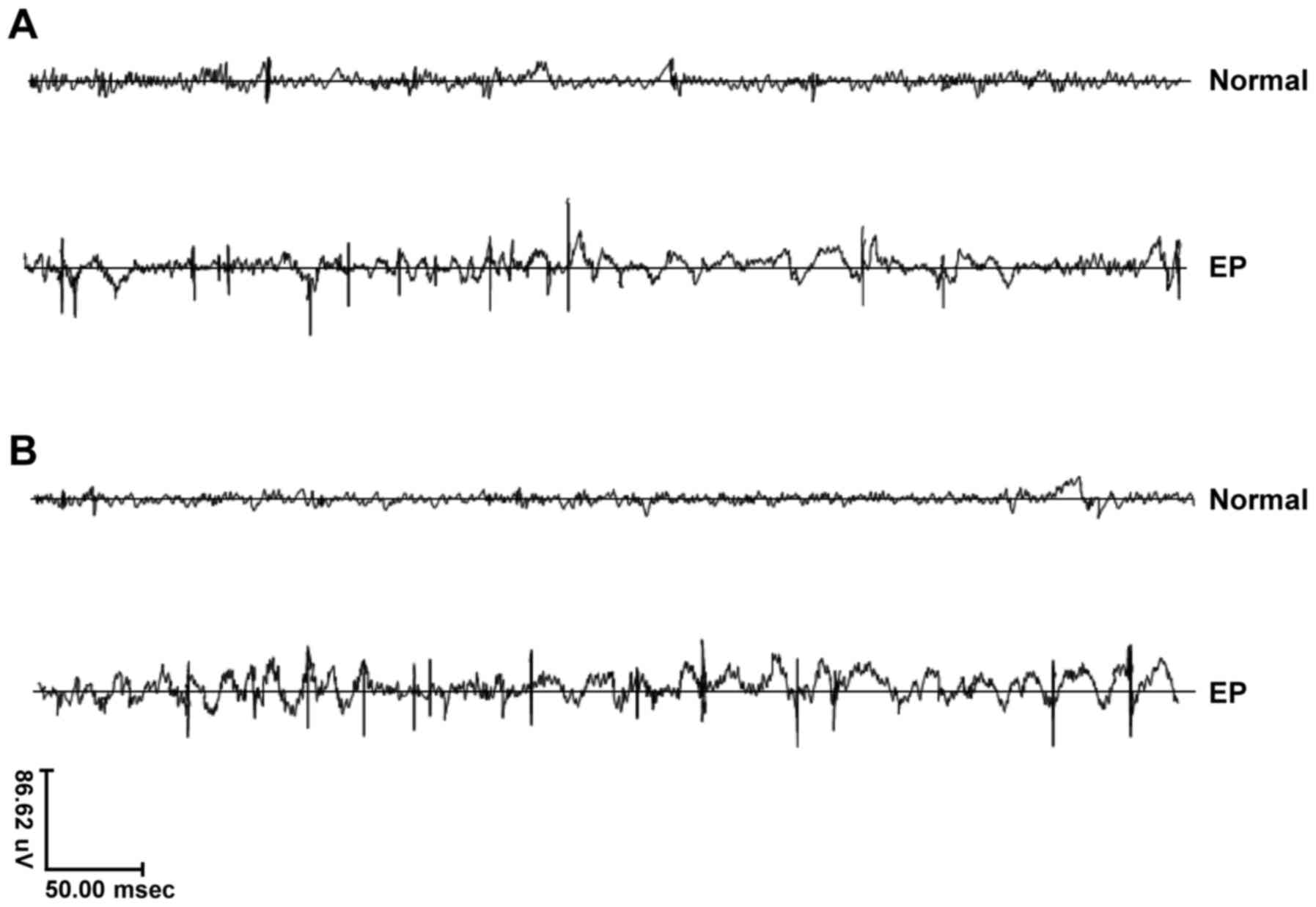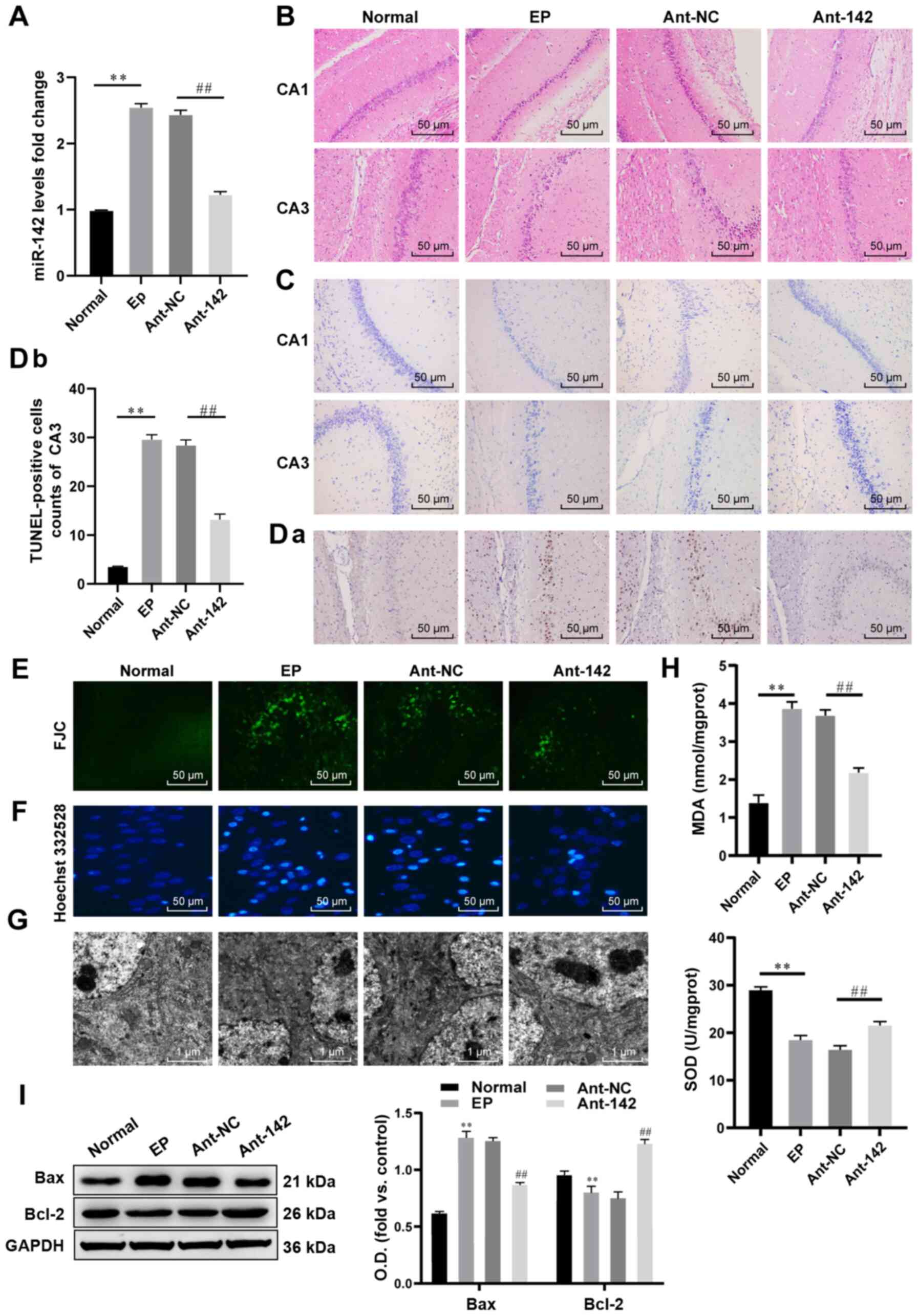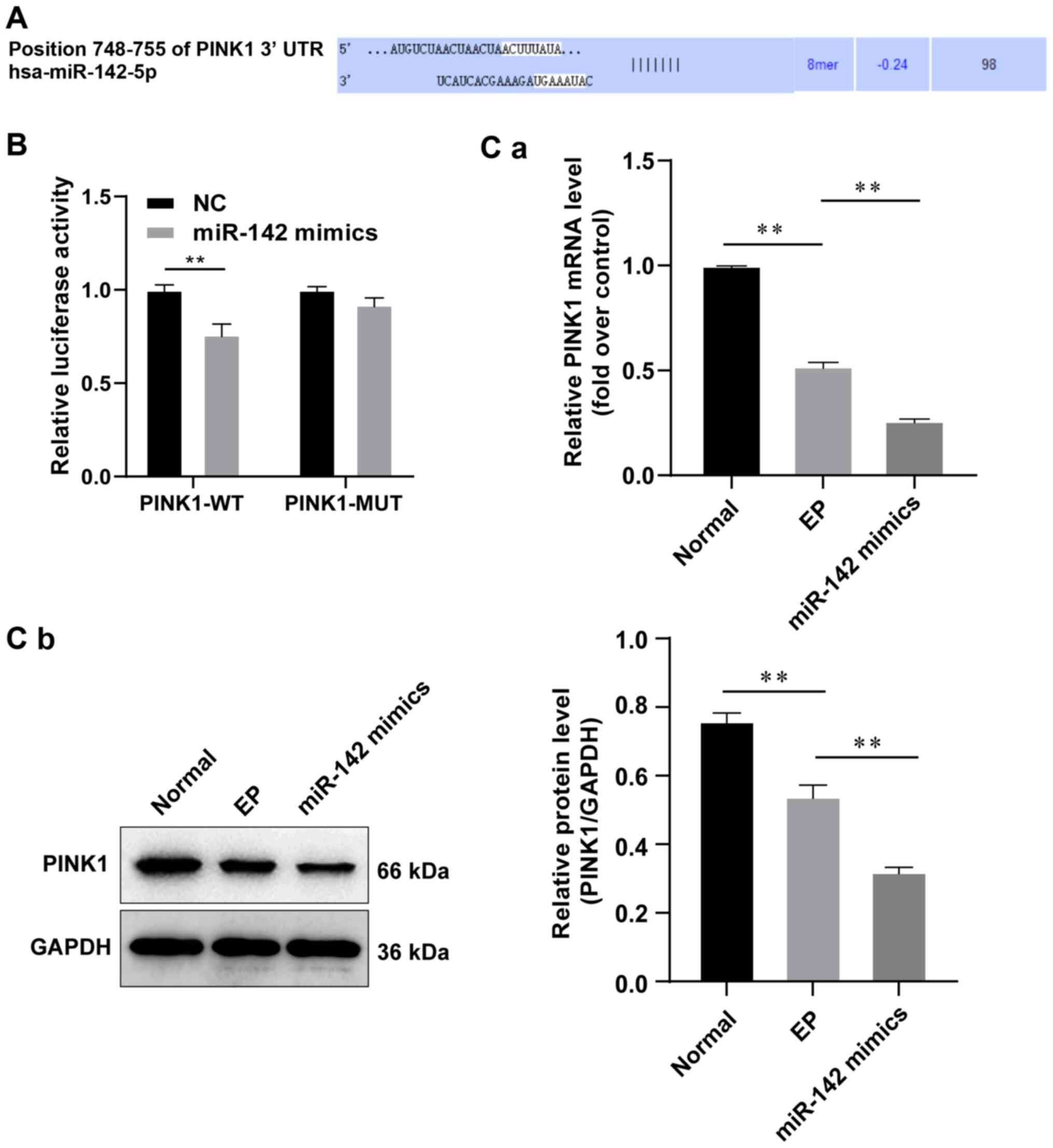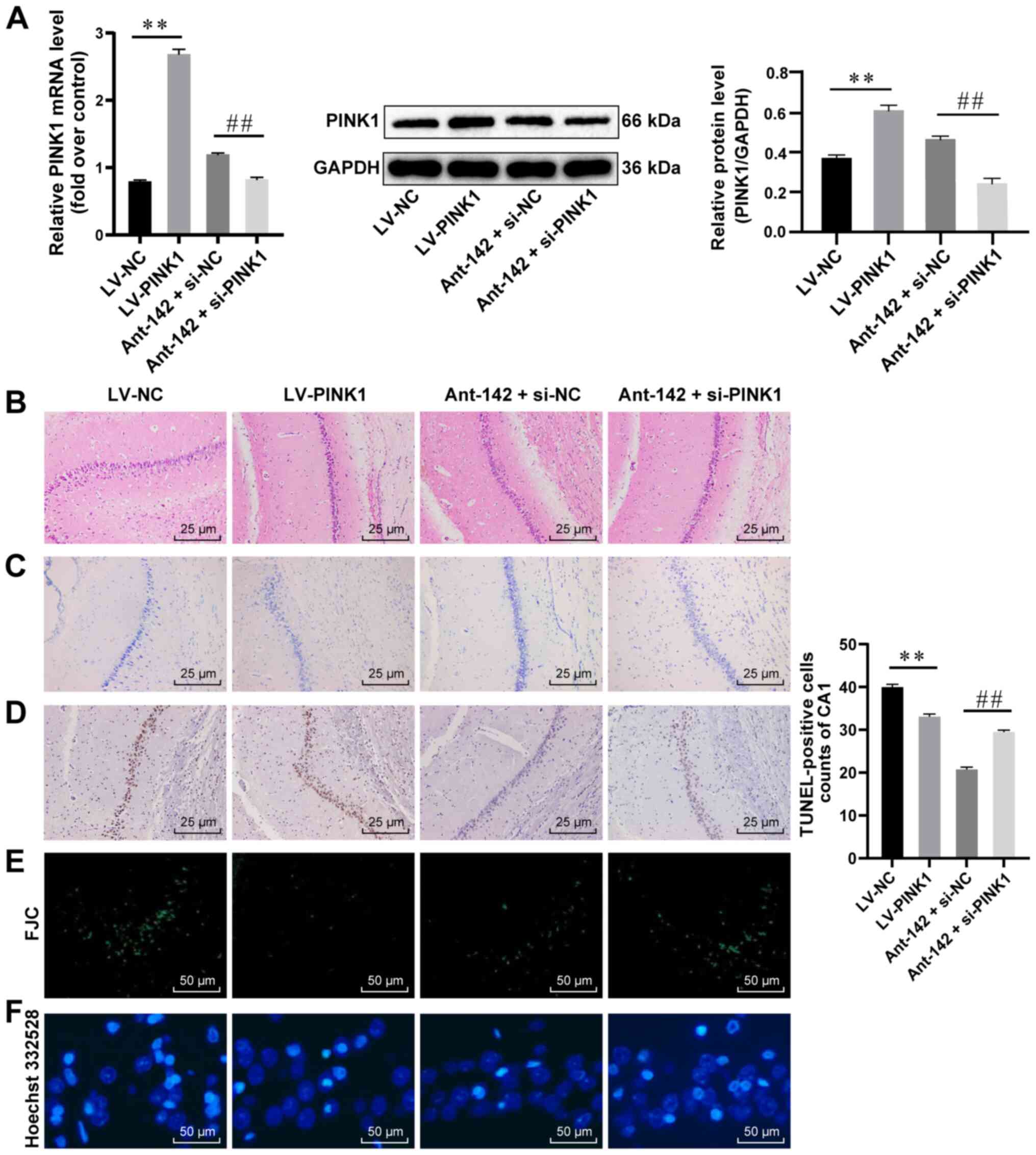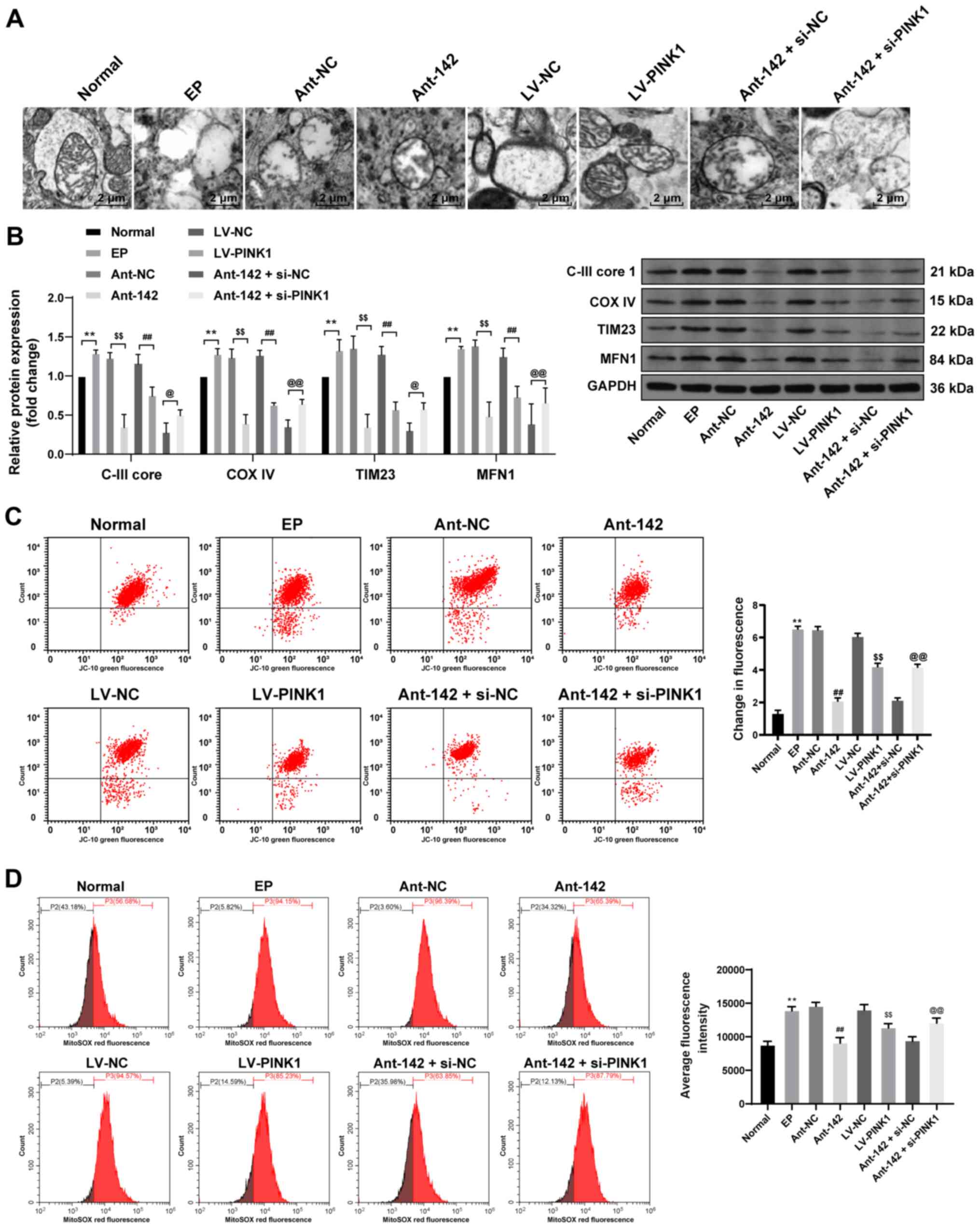|
1
|
Vezzani A, French J, Bartfai T and Baram
TZ: The role of inflammation in epilepsy. Nat Rev Neurol. 7:31–40.
2011. View Article : Google Scholar
|
|
2
|
Vezzani A, Fujinami RS, White HS, Preux
PM, Blümcke I, Sander JW and Löscher W: Infections, inflammation
and epilepsy. Acta Neuropathol. 131:211–234. 2016. View Article : Google Scholar :
|
|
3
|
Moon J, Lee ST, Choi J, Jung KH, Yang H,
Khalid A, Kim JM, Park KI, Shin JW, Ban JJ, et al: Unique
behavioral characteristics and microRNA signatures in a drug
resistant epilepsy model. PLoS One. 9:e856172014. View Article : Google Scholar : PubMed/NCBI
|
|
4
|
Newton CR and Garcia HH: Epilepsy in poor
regions of the world. Lancet. 380:1193–1201. 2012. View Article : Google Scholar : PubMed/NCBI
|
|
5
|
Gu L, Liang B, Chen Q, Long J, Xie J, Wu
G, Yan Y, Tan J, Dou W, Chen W, et al: Prevalence of epilepsy in
the People's Republic of China: A systematic review. Epilepsy Res.
105:195–205. 2013. View Article : Google Scholar : PubMed/NCBI
|
|
6
|
Guerrini R, Marini C and Mantegazza M:
Genetic epilepsy syndromes without structural brain abnormalities:
Clinical features and experimental models. Neurotherapeutics.
11:269–285. 2014. View Article : Google Scholar : PubMed/NCBI
|
|
7
|
van Campen JS, Jansen FE, de Graan PN,
Braun KP and Joels M: Early life stress in epilepsy: A seizure
precipitant and risk factor for epileptogenesis. Epilepsy Behav.
38:160–171. 2014. View Article : Google Scholar
|
|
8
|
Wu M, Liu X, Chi X, Zhang L, Xiong W,
Chiang SMV, Zhou D and Li J: Mitophagy in refractory temporal lobe
epilepsy patients with hippocampal sclerosis. Cell Mol Neurobiol.
38:479–486. 2018. View Article : Google Scholar
|
|
9
|
Cao DD, Li L and Chan WY: MicroRNAs: Key
regulators in the central nervous system and their implication in
neurological diseases. Int J Mol Sci. 17:8422016. View Article : Google Scholar :
|
|
10
|
Gorter JA, Iyer A, White I, Colzi A, van
Vliet EA, Sisodiya S and Aronica E: Hippocampal subregion-specific
microRNA expression during epileptogenesis in experimental temporal
lobe epilepsy. Neurobiol Dis. 62:508–520. 2014. View Article : Google Scholar
|
|
11
|
Shrestha A, Mukhametshina RT, Taghizadeh
S, Vásquez-Pacheco E, Cabrera-Fuentes H, Rizvanov A, Mari B,
Carraro G and Bellusci S: MicroRNA-142 is a multifaceted regulator
in organogenesis, homeostasis, and disease. Dev Dyn. 246:285–290.
2017. View Article : Google Scholar
|
|
12
|
Junker A, Krumbholz M, Eisele S, Mohan H,
Augstein F, Bittner R, Lassmann H, Wekerle H, Hohlfeld R and Meinl
E: MicroRNA profiling of multiple sclerosis lesions identifies
modulators of the regulatory protein CD47. Brain. 132:3342–3352.
2009. View Article : Google Scholar : PubMed/NCBI
|
|
13
|
Lin W and Kang UJ: Structural determinants
of PINK1 topology and dual subcellular distribution. BMC Cell Biol.
11:902010. View Article : Google Scholar : PubMed/NCBI
|
|
14
|
Dagda RK, Pien I, Wang R, Zhu J, Wang KZQ,
Callio J, Banerjee TD, Dagda RY and Chu CT: Beyond the
mitochondrion: Cytosolic PINK1 remodels dendrites through protein
kinase A. J Neurochem. 128:864–877. 2014. View Article : Google Scholar :
|
|
15
|
Kwak YD, Wang B, Pan W, Xu H, Jiang X and
Liao FF: Functional interaction of phosphatase and tensin homologue
(PTEN) with the E3 ligase NEDD4-1 during neuronal response to zinc.
J Biol Chem. 285:9847–9857. 2010. View Article : Google Scholar : PubMed/NCBI
|
|
16
|
Sun J, Gao X, Meng D, Xu Y, Wang X, Gu X,
Guo M, Shao X, Yan H, Jiang C and Zheng Y: Antagomirs targeting
MiroRNA-134 attenuates epilepsy in rats through regulation of
oxidative stress, mitochondrial functions and autophagy. Front
Pharmacol. 8:5242017. View Article : Google Scholar : PubMed/NCBI
|
|
17
|
Racine RJ: Modification of seizure
activity by electrical stimulation: Cortical areas.
Electroencephalogr Clin Neurophysiol. 38:1–12. 1975. View Article : Google Scholar : PubMed/NCBI
|
|
18
|
Liao Y, Huang Y, Liu X, Luo C, Zou D, Wei
X, Huang Q and Wu Y: MicroRNA-328a regulates water maze performance
in PTZ-kindled rats. Brain Res Bull. 125:205–210. 2016. View Article : Google Scholar : PubMed/NCBI
|
|
19
|
Livak KJ and Schmittgen TD: Analysis of
relative gene expression data using real-time quantitative PCR and
the 2(-Delta Delta C(T)) method. Methods. 25:402–408. 2001.
View Article : Google Scholar
|
|
20
|
Ma P, Yun J, Deng H and Guo M: Atg1
mediated autophagy suppresses tissue degeneration in pink1/parkin
mutants by promoting mitochondrial fission in drosophila. Mol Biol
Cell. 29:3082–3092. 2018. View Article : Google Scholar : PubMed/NCBI
|
|
21
|
Jacobs J, Staba R, Asano E, Otsubo H, Wu
JY, Zijlmans M, Mohamed I, Kahane P, Dubeau F, Navarro V and Gotman
J: High-frequency oscillations (HFOs) in clinical epilepsy. Prog
Neurobiol. 98:302–315. 2012. View Article : Google Scholar : PubMed/NCBI
|
|
22
|
Feng L, Shu Y, Wu Q, Liu T, Long H, Yang
H, Li Y and Xiao B: EphA4 may contribute to microvessel remodeling
in the hippocampal CA1 and CA3 areas in a mouse model of temporal
lobe epilepsy. Mol Med Rep. 15:37–46. 2017. View Article : Google Scholar :
|
|
23
|
Liu Z, Yang C, Meng X, Li Z, Lv C and Cao
P: Neuroprotection of edaravone on the hippocampus of
kainate-induced epilepsy rats through Nrf2/HO-1 pathway. Neurochem
Int. 112:159–165. 2018. View Article : Google Scholar
|
|
24
|
Saffarzadeh F, Eslamizade MJ, Mousavi SM,
Abraki SB, Hadjighassem MR and Gorji A: TRPV1 receptors augment
basal synaptic transmission in CA1 and CA3 pyramidal neurons in
epilepsy. Neuroscience. 314:170–178. 2016. View Article : Google Scholar
|
|
25
|
Henshall DC: MicroRNA and epilepsy:
Profiling, functions and potential clinical applications. Curr Opin
Neurol. 27:199–205. 2014. View Article : Google Scholar : PubMed/NCBI
|
|
26
|
Ghanbari M, Munshi ST, Ma B, Lendemeijer
B, Bansal S, Adams HH, Wang W, Goth K, Slump DE, van den Hout MCGN,
et al: A functional variant in the miR-142 promoter modulating its
expression and conferring risk of Alzheimer disease. Hum Mutat.
40:2131–2145. 2019. View Article : Google Scholar : PubMed/NCBI
|
|
27
|
Qiang M, Xu Y, Lu Y, He Y, Han C, Liu Y
and He R: Autofluorescence of MDA-modified proteins as an in vitro
and in vivo probe in oxidative stress analysis. Protein Cell.
5:484–487. 2014. View Article : Google Scholar : PubMed/NCBI
|
|
28
|
Roomruangwong C, Barbosa DS, de Farias CC,
Matsumoto AK, Baltus TH, Morelli NR, Kanchanatawan B, Duleu S,
Geffard M and Maes M: Natural regulatory IgM-mediated autoimmune
responses directed against malondialdehyde regulate oxidative and
nitrosative pathways and coupled with IgM responses to nitroso
adducts attenuate depressive and physiosomatic symptoms at the end
of term pregnancy. Psychiatry Clin Neurosci. 72:116–130. 2018.
View Article : Google Scholar
|
|
29
|
Dillioglugil MO, Kir HM, Demir C, Ilbay G,
Sahin D, Dillioglugil O, Bambal G, Mekik H and Ates N: Effect of
pentylenetetrazole and sound stimulation induced single and
repeated convulsive seizures on the MDA, GSH and NO levels, and SOD
activities in rat liver and kidney tissues. Brain Res Bull.
83:356–359. 2010. View Article : Google Scholar : PubMed/NCBI
|
|
30
|
Chang SJ and Yu BC: Mitochondrial matters
of the brain: Mitochondrial dysfunction and oxidative status in
epilepsy. J Bioenerg Biomembr. 42:457–459. 2010. View Article : Google Scholar : PubMed/NCBI
|
|
31
|
Baluchnejadmojarad T and Roghani M:
Coenzyme q10 ameliorates neurodegeneration, mossy fiber sprouting,
and oxidative stress in intrahippocampal kainate model of temporal
lobe epilepsy in rat. J Mol Neurosci. 49:194–201. 2013. View Article : Google Scholar
|
|
32
|
Lorigados Pedre L, Gallardo JM, Morales
Chacon LM, García AV, Flores-Mendoza M, Neri-Gómez T, Díaz BE,
Cruz-Xenes RM, Fuentes NP and Orozco-Suárez S: Oxidative stress in
patients with drug resistant partial complex seizure. Behav Sci
(Basel). 8. pp. 592018, View Article : Google Scholar
|
|
33
|
Chen D, Lu Y, Yu W, Luo J, Xiao Z, Xiao F
and Wang X: Clinical value of decreased superoxide dismutase 1 in
patients with epilepsy. Seizure. 21:508–511. 2012. View Article : Google Scholar : PubMed/NCBI
|
|
34
|
Li J, Wang LN, Xiao HL, Li X and Yang JJ:
Effect of electroacupuncture intervention on levels of SOD, GSH,
GSH-Px, MDA, and apoptosis of dopaminergic neurons in substantia
Nigra in rats with Parkinson's disease. Zhen Ci Yan Jiu.
39:185–191. 2014.In Chinese. PubMed/NCBI
|
|
35
|
Wang N, Zhang L, Lu Y, Zhang M, Zhang Z,
Wang K and Lv J: Down-regulation of microRNA-142-5p attenuates
oxygen-glucose deprivation and reoxygenation-induced neuron injury
through up-regulating Nrf2/ARE signaling pathway. Biomed
Pharmacother. 89:1187–1195. 2017. View Article : Google Scholar : PubMed/NCBI
|
|
36
|
Priyadarshini M, Orosco LA and Panula PJ:
Oxidative stress and regulation of Pink1 in zebrafish (Danio
rerio). PLoS One. 8:e818512013. View Article : Google Scholar : PubMed/NCBI
|
|
37
|
Narendra DP, Jin SM, Tanaka A, Suen DF,
Gautier CA, Shen J, Cookson MR and Youle RJ: PINK1 is selectively
stabilized on impaired mitochondria to activate Parkin. PLoS Biol.
8:e10002982010. View Article : Google Scholar : PubMed/NCBI
|
|
38
|
Yu W, Sun Y, Guo S and Lu B: The
PINK1/Parkin pathway regulates mitochondrial dynamics and function
in mammalian hippocampal and dopaminergic neurons. Hum Mol Genet.
20:3227–3240. 2011. View Article : Google Scholar : PubMed/NCBI
|
|
39
|
White JP, Baltgalvis KA, Puppa MJ, Sato S,
Baynes JW and Carson JA: Muscle oxidative capacity during
IL-6-dependent cancer cachexia. Am J Physiol Regul Integr Comp
Physiol. 300:R201–R211. 2011. View Article : Google Scholar :
|
|
40
|
Kondapalli C, Kazlauskaite A, Zhang N,
Woodroof HI, Campbell DG, Gourlay R, Burchell L, Walden H,
Macartney TJ, Deak M, et al: PINK1 is activated by mitochondrial
membrane potential depolarization and stimulates Parkin E3 ligase
activity by phosphorylating Serine 65. Open Biol. 2:1200802012.
View Article : Google Scholar : PubMed/NCBI
|
|
41
|
Cherra SJ III, Dagda RK, Tandon A and Chu
CT: Mitochondrial autophagy as a compensatory response to PINK1
deficiency. Autophagy. 5:1213–1214. 2009. View Article : Google Scholar : PubMed/NCBI
|
|
42
|
Chen J, Cui Y, Zhang N, Yao X, Wang Z and
Yang L: Oleanolic acid attenuated diabetic mesangial cell injury by
activation of autophagy via miRNA-142-5p/PTEN signaling.
Cytotechnology. 71:925–933. 2019. View Article : Google Scholar : PubMed/NCBI
|















